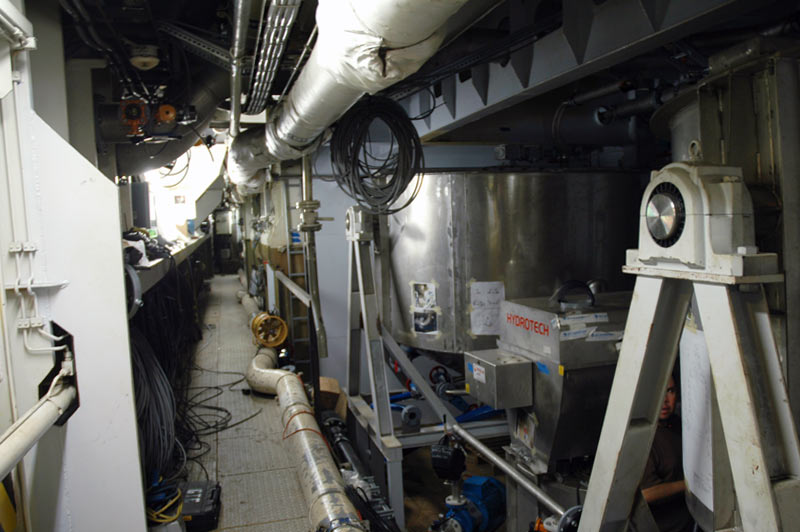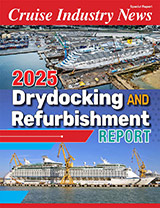 Onboard Royal Caribbean’s Explorer of the Seas, the eco-culture extends from a recently advanced wastewater purification(AWP) system installation to garbage processing, recycling, fuel savings, education and more, as showed by Richard Pruitt, Royal Caribbean Cruises’ associate vice president of environmental programs, and Explorer of the Seas Environmental Officer Bridget Sullivan, on an exclusive ship visit with Cruise Industry News (CIN).
Onboard Royal Caribbean’s Explorer of the Seas, the eco-culture extends from a recently advanced wastewater purification(AWP) system installation to garbage processing, recycling, fuel savings, education and more, as showed by Richard Pruitt, Royal Caribbean Cruises’ associate vice president of environmental programs, and Explorer of the Seas Environmental Officer Bridget Sullivan, on an exclusive ship visit with Cruise Industry News (CIN).
Installing an AWP during a ship’s service life is not exactly plug and play, Pruitt noted. The ship, launched more than a decade ago in 2000, was in the middle of an AWP installation, using equipment from Scanship. The installation was started in May and scheduled to go online in late September (as this issue went to press).
That meant finding space in mechanical areas on a ship that predated the idea of AWP, which includes mixing tanks and a bioreactor, as well as other equipment. Guidelines set by Royal say existing grey and black water systems will also remain intact as a redundancy.
The vessel’s water-making ability is split between reverse osmosis and evaporators, which borrow heat from the engine room.
“Volume reduction is key (for waste),” said Pruitt, pointing to 1,600 pounds of crushed glass that took up the same amount of space as a small pallet delivery. This gives the line a great opportunity to hold garbage until it has the best opportunity to recycle it.
Other neat toys include a tool to puncture aerosol cans, as well as a fluorescent bulb crusher.
Sullivan pointed out the discharge log on the bridge, which is also available on computers in offices next to the engine control room.
A complicated, attention-to-detail lover’s dream of a color-coded Excel spreadsheet includes specifics such as time, date, position, speed (Royal has specific rules about this), and various other details. Discharge plans are also coordinated and fact-checked by both the bridge and the environmental officer.
As one source put it to CIN: “The logs are the basis of any ship inspection.”
Bilge water is heated to around 50 degrees Celsius, which lets the greatest gravitational separation occur between oil and water, moving oil to the top of tanks – which is then sent to separators to remove oil and other contaminants.
The system will continually treat any water that checks in above five parts per million (contamination level) before moving it into the “clean tank.”
With the company calling at more than 400 ports this year, there are some issues, said Pruitt. Some calls require Royal to use a specific vendor, whether they want to or not. Plus, there is always that issue of where the garbage actually goes. But, the line tries to ensure proper handling of all waste, using methods such as compacting volume and storing waste for specific ports. Additionally, Royal set up auditing guidelines (on shoreside facilities) for environmental officers since 2010.
Sullivan said her job as the environmental officer onboard was all about education. “We need to educate people – passengers and crew – about proper separation and recycling. This is a working environment,” she continued.
“There is also a decent turnover with crew,” meaning that new crew members need to be brought up to speed. Sullivan also runs Royal Caribbean’s Save the Wavestraining onboard, which is required training for crew starting a new contract, no matter how long they have been at sea.
Excerpt from Cruise Industry News Quarterly Magazine: Fall 2011



